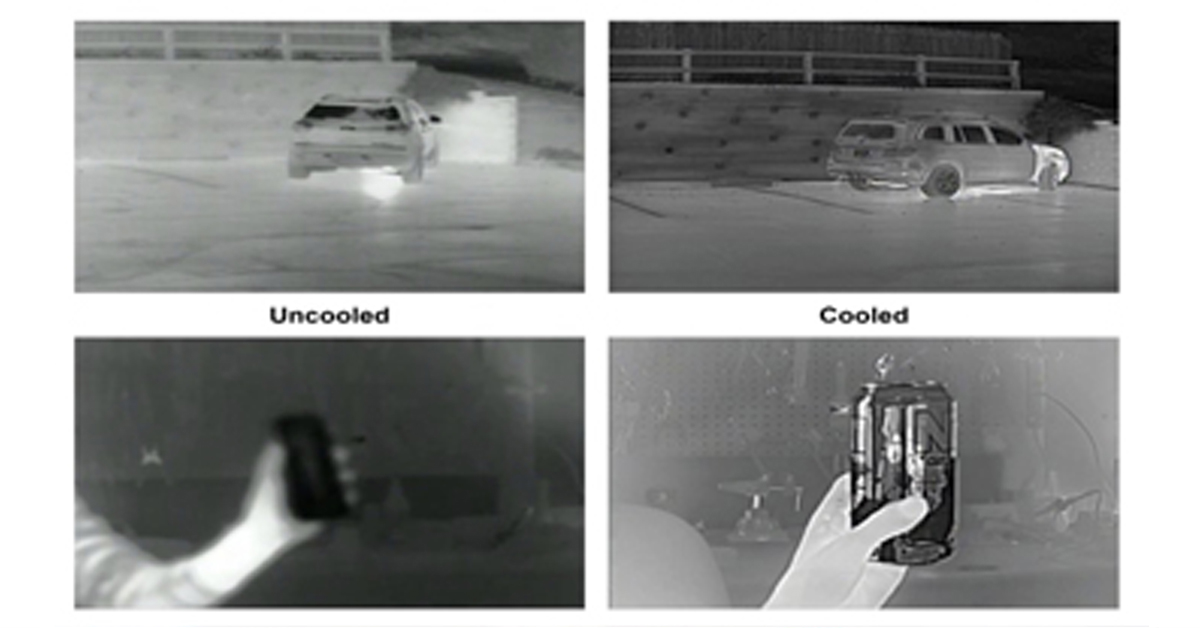
Thermal Camera Selection
1. Detector Resolution
The most important issue in choosing a thermal camera is the actual resolution of the detectors to be selected. The high resolution of the detector increases the range of the camera and provides better images. In this way, diagnosis and classification can be made from longer distances. For example, a 1280 x 720 resolution camera will have 2 times more range than a 640x 480 resolution camera.

640 x 480 Resolution 1280 x 720 Resolution
2. Lens Size
Lens size is an important factor affecting the range in a thermal camera. The larger the lens, the greater the range. However, the enlargement of the lens causes a narrowing of the field of view. In other words, a field of 24 degrees can be seen with a 13 mm lens, while a field of 12 degrees can be seen with a 35 mm lens. The advantage of the narrow angle is that it facilitates the identification of the target, while the disadvantage is that it reduces situational awareness due to the narrow field of view. For this reason, cameras with optical zoom feature turn disadvantages into advantages, enabling both perimeter surveillance and identification of the target.
| Point of View | Lens | Detection | Recognition | Identification |
| 25 Degrees | 25 mm | 2800 m | 710 m | 360 m |
| 12 Degrees | 50 mm | 5100 m | 1320 m | 660 m |
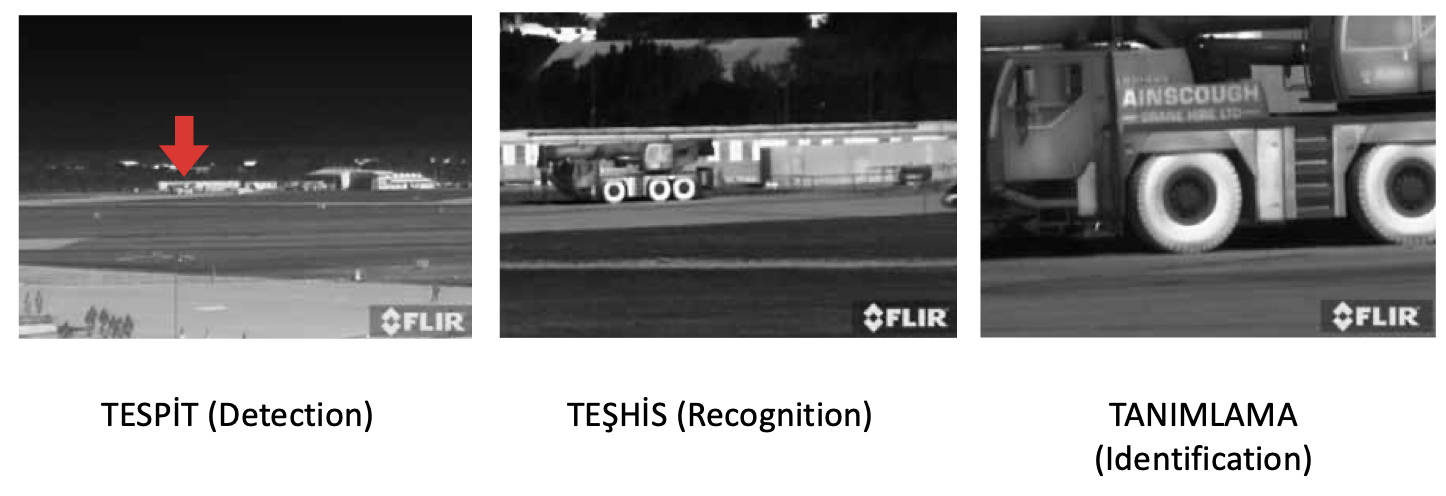
3. Detector Pixel Pitch
Pixel pitch in detectors is very important for the quality of the resulting image. The wider it is, the blurrier the image will be. Therefore, the image quality will decrease and targets will be harder to detect. A pixel pitch of less than 17 µm will provide a good result.
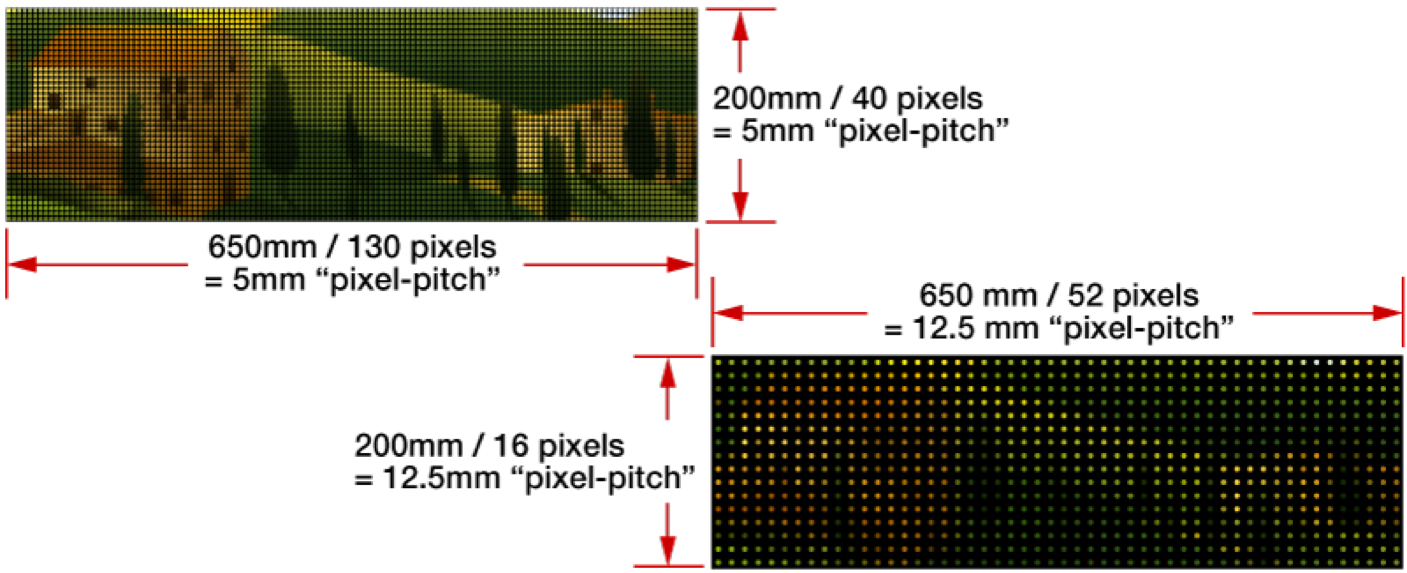
4. Thermal Sensitivity
Thermal sensitivity is the temperature difference that the detector can measure between two points. For example, a detector with a thermal sensitivity of 0.2 degrees will show a 35 degree point and a 35.2 degree point as a single point. Therefore, the smaller the thermal sensitivity, the more accurate the target discrimination will be. This will affect the range of the camera and will result in a smoother image. It should be less than 35 mK for uncooled thermal cameras and less than 25 mK for cooled thermal cameras.
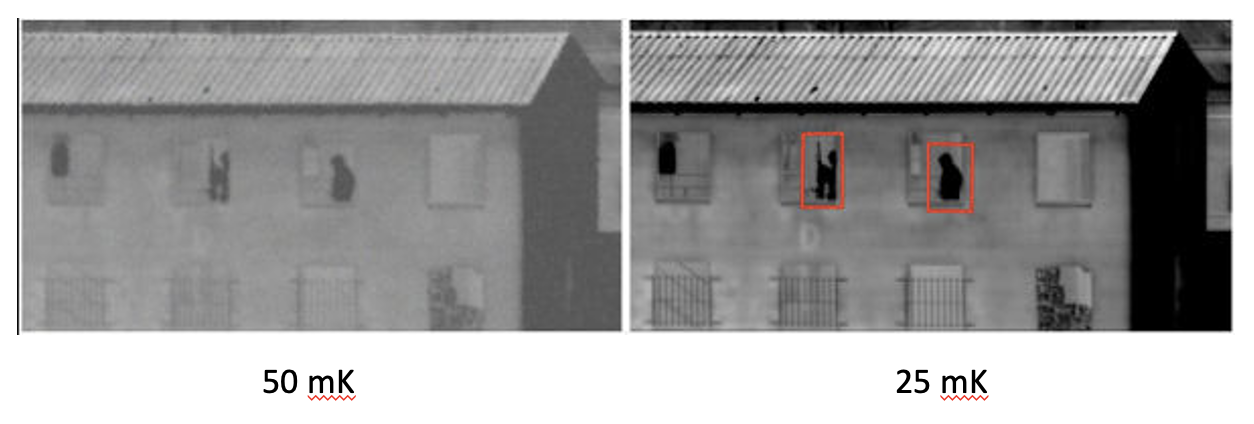
5. Screen Format
The screen format supported by the thermal camera is important for increasing situational awareness. 640x480 detectors support the 4:3 format, so most screens have black bands around the edges. In order to prevent this, some cameras do enlargement, which causes image loss. It can show a wider area in 16:9 format.
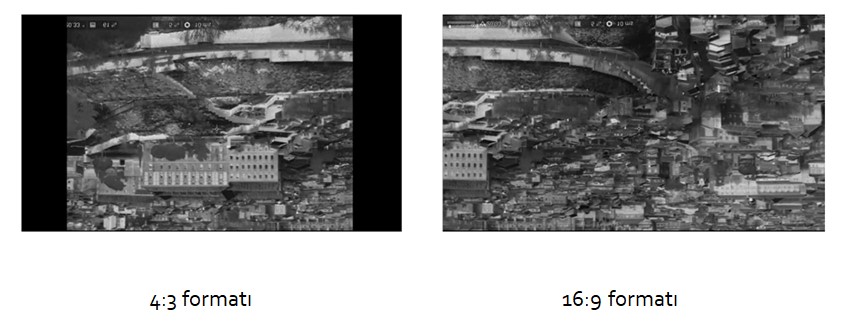
6. Turbulence Filter
Thermal cameras are affected by evaporation due to environmental temperature, which prevents blurring of the image and detecting some targets. There is a lot of turbulence, especially on areas such as sand and asphalt. It is an important issue in target detection that the camera has filters to reduce this turbulence.

Filter off Filter on
7. Detector Life
The most important part of thermal cameras are their detectors. Especially in cooled type detectors, the cooling system needs maintenance during certain working hours. These maintenance parts are the most costly parts. In some cases, it costs close to 1/4 of the camera. Therefore, the longer the maintenance period, the lower the long-term maintenance cost of the camera. While calculating the purchase cost, attention should be paid to this issue, and detectors with a maintenance period of more than 10,000 hours should be selected. This must be added to the selection criteria as an evaluation item. Maintenance-free cameras up to 25,000 hours are also available.
8. Detector Material
The material of the detector is important in terms of sensitivity and reaction rate and causes it to be affected by environmental noise. Especially in cooled cameras, Indium Antimonide (InSb) detectors give better results.
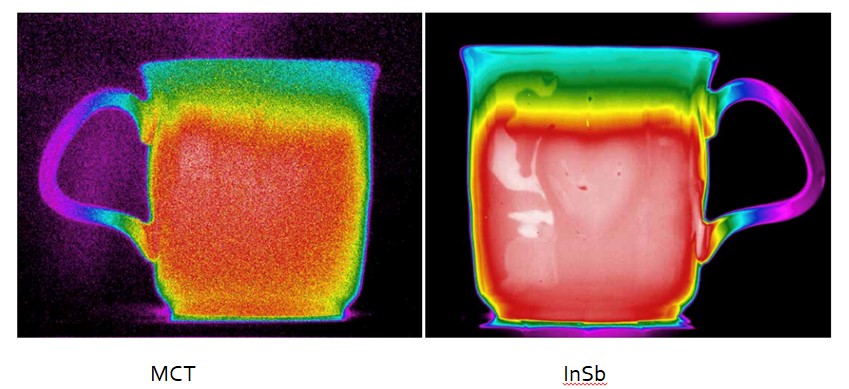
Blog Posts

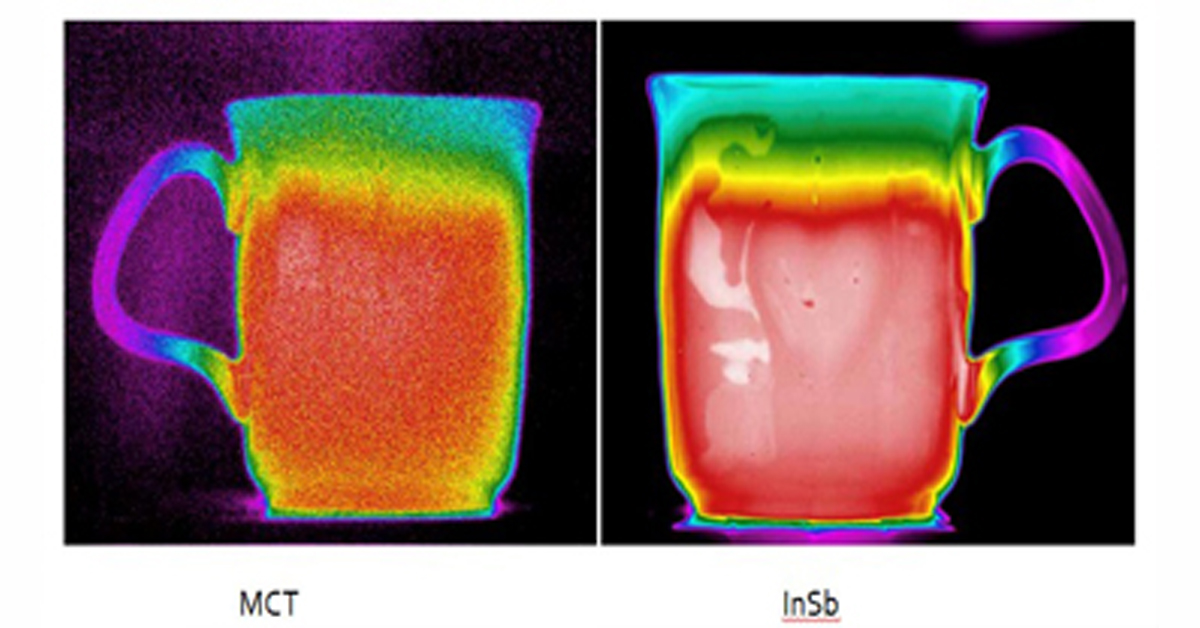
Thermal Camera Selection
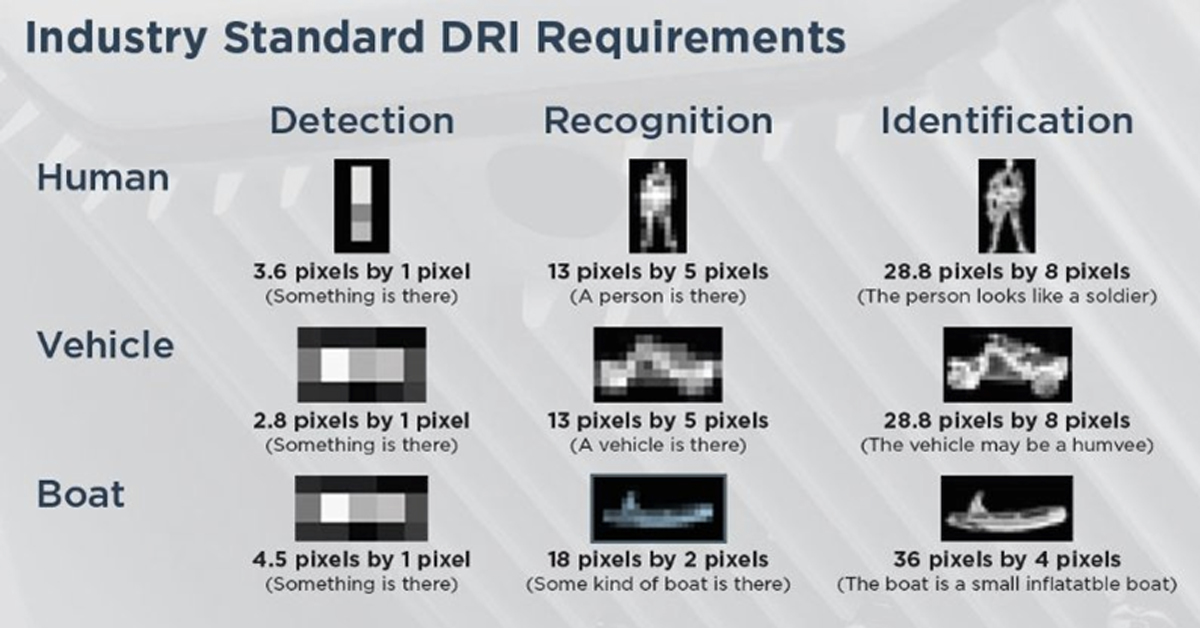
How Far Can I See?

How Should Human Temperature Be Measured?

What is Wide Dynamic Range?

MYNOISE AUDIO MIXER REVIEW

WHAT IS A WIRELESS DISTRIBUTION SYSTEM?

POE VS. POE+ VS. POE++: CHOOSING THE RIGHT INDUSTRIAL ETHERNET SWITCH FOR YOU
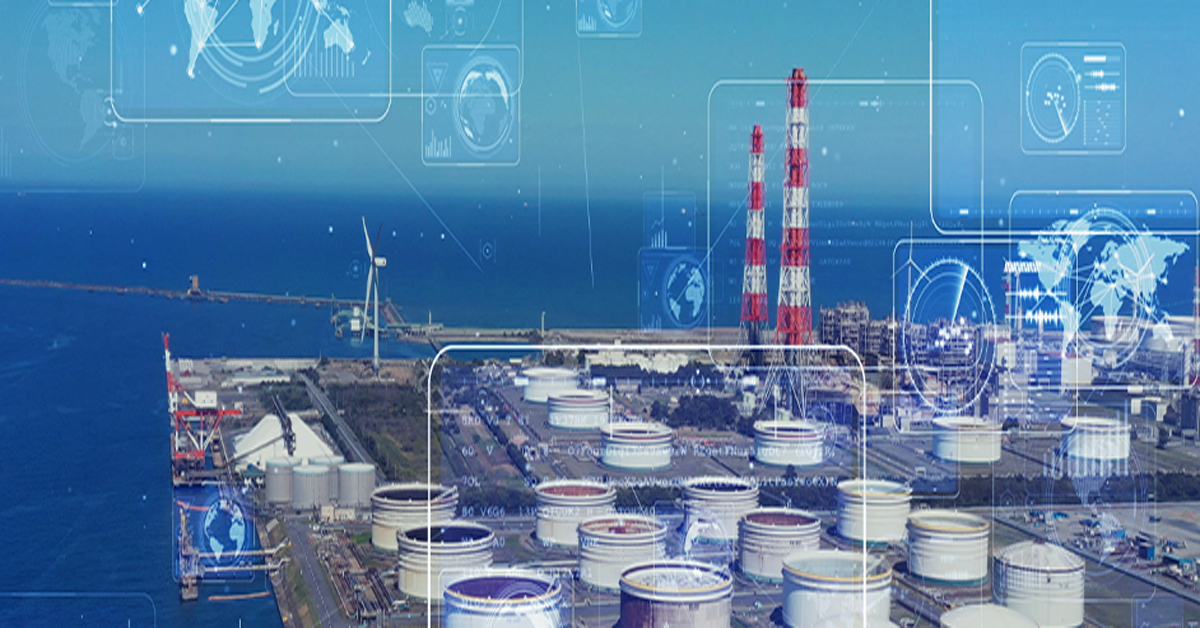
INDUSTRY-LEADING INDUSTRIAL ETHERNET SWITCHES
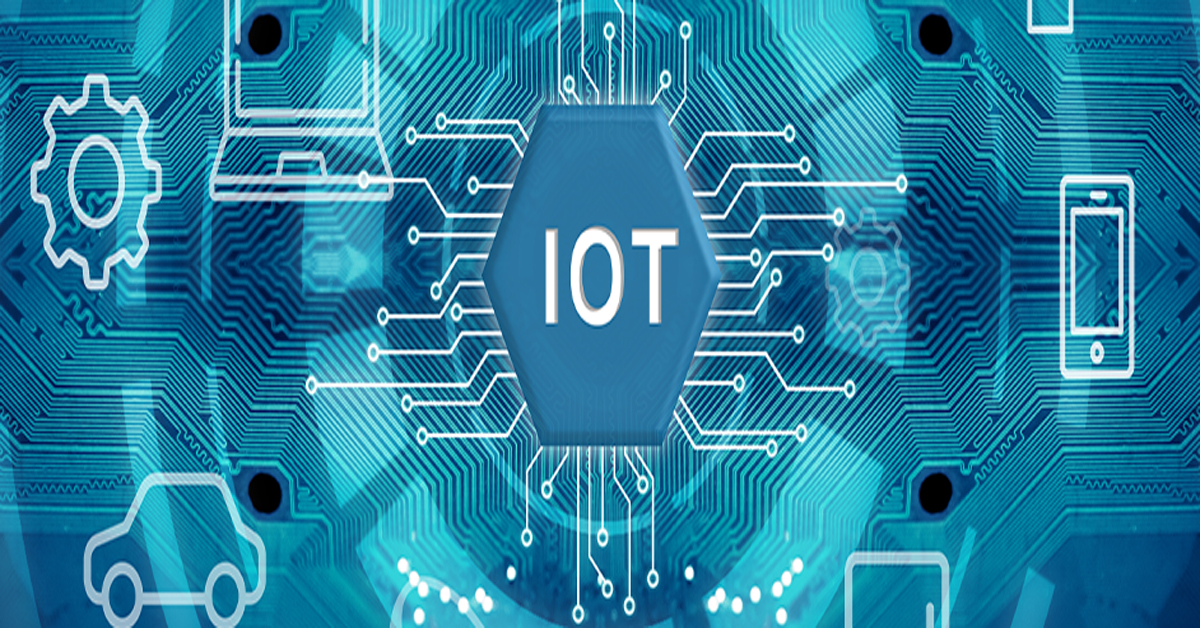
UNDERSTANDING WHAT THE INDUSTRIAL INTERNET OF THINGS IS
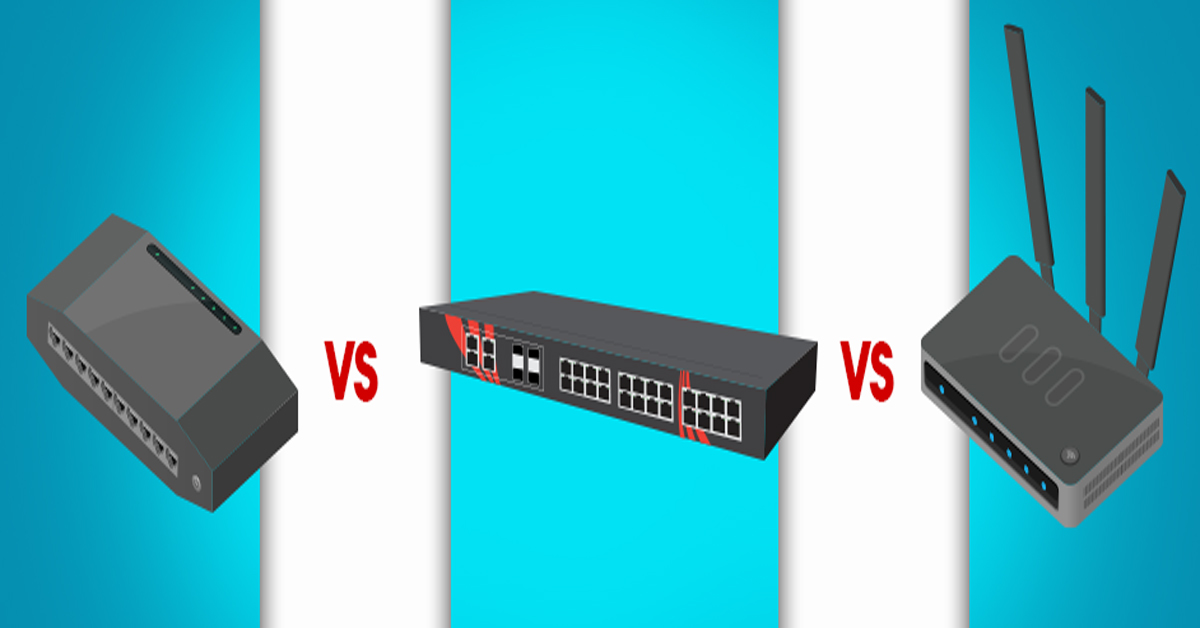
THE DIFFERENCE BETWEEN A HUB, SWITCH, & ROUTER
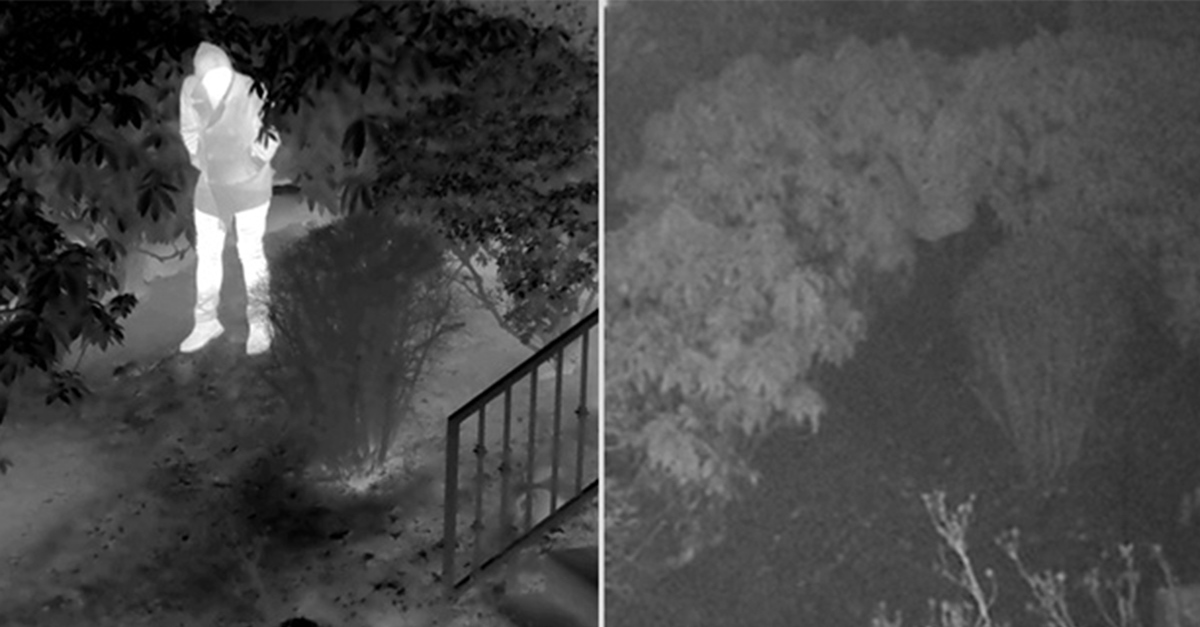
5 Benefits of Thermal Imaging Cameras
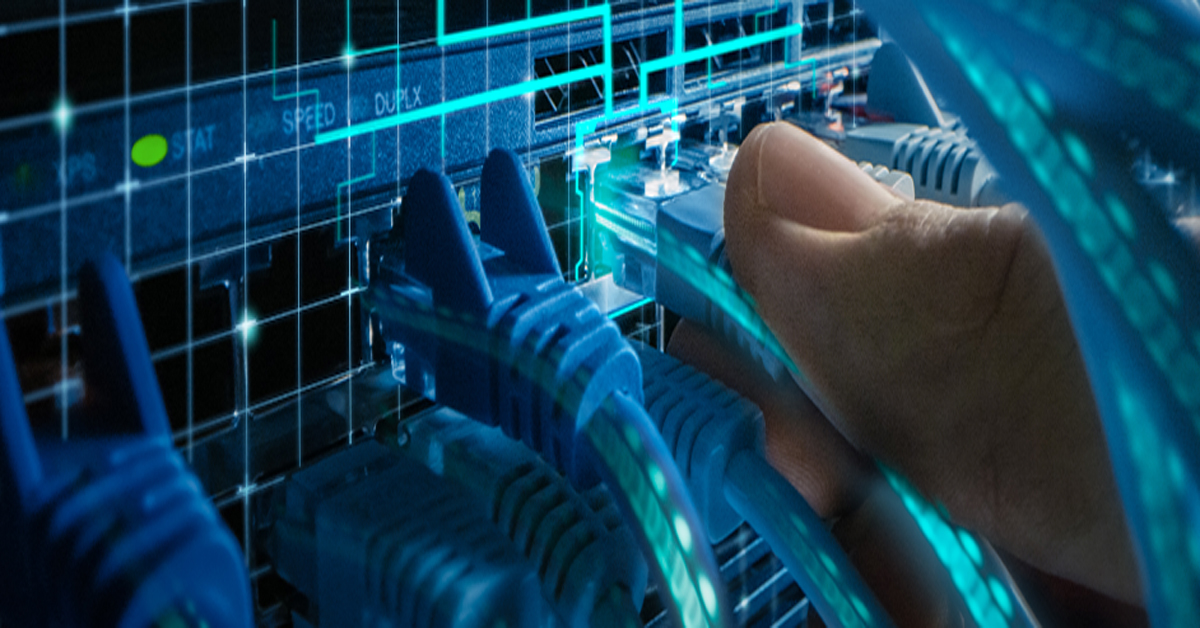
DIFFERENCE BETWEEN INDUSTRIAL ETHERNET AND REGULAR ETHERNET

INDUSTRIAL NETWORKING EQUIPMENT USED FOR AUTONOMOUS VEHICLES

CYBERSECURITY: PROTECTING INDUSTRIAL CONTROL SYSTEMS

HOW INDUSTRIAL NETWORKING CAN PROVIDE SECURITY FROM DRONES
.webp)
Thermal Cameras Reveal How to Keep Your Home Cool During a Heat Wave

FLıR ONE PRO
.png)
Unmatched Maritime Awareness with Cooled Thermal Imaging
.png)
What Is the Right Handheld Thermal Camera for You?
.png)
Camera Resolution and Range
.png)
Special Applications for Marine Cameras
.png)
What’s The Difference between Thermal Imaging and Night Vision?
.png)
Can Thermal Imaging See Through Fog and Rain?
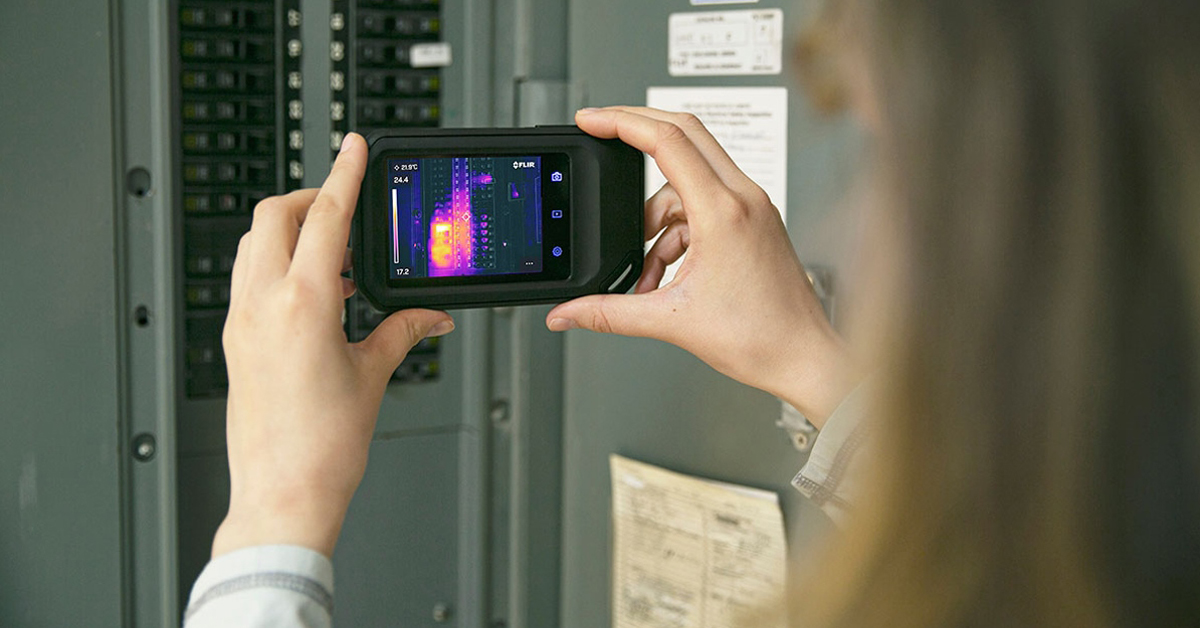
Which Cx-Series Camera Is Right for You?
.png)
What is MSX®?

Five Reasons Maritime First Responders Need Thermal Imaging
.png)
3 Distinguishing Features of Superior Thermal Cameras
.png)
Determine Which Visible and Thermal Security Cameras You Need
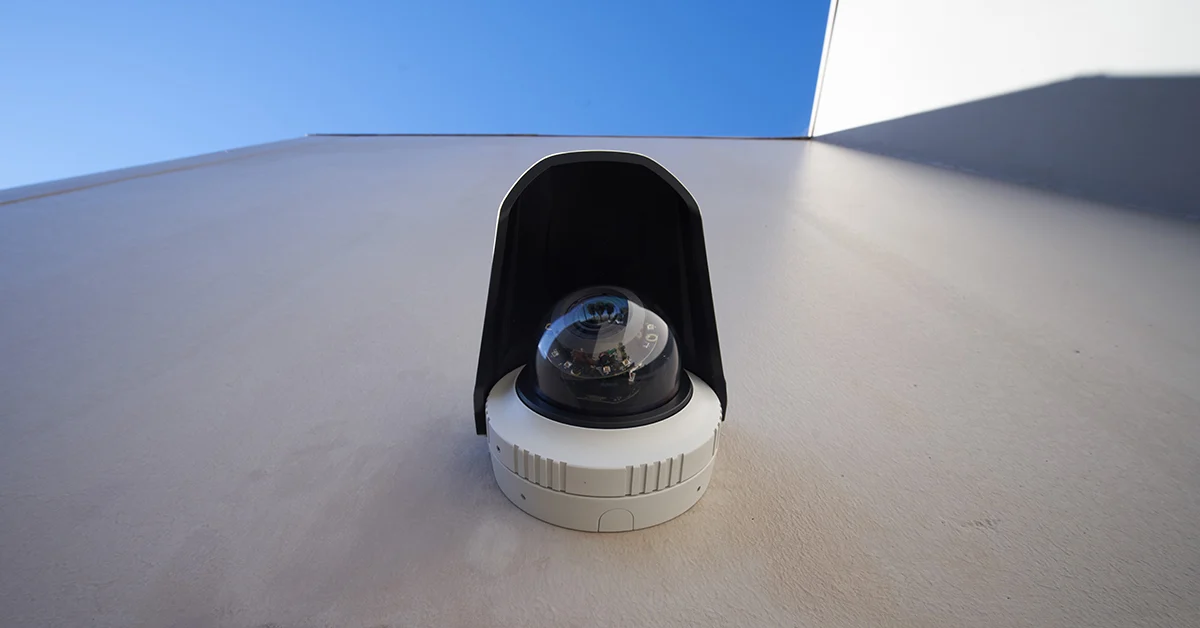
Bullet vs. PTZ vs. Dome: Which Security Camera Is Right for You?

Interfaces for Machine Vision

Machine Vision Sensor Review
.png)
Teledyne FLIR, the Industry Leader, Launches Boson +, a Long-Wave Infrared Thermal Imager Module with an Accuracy of Less Than 20 mK
.png)
Whitepaper: IP-Based Security Convergence
.png)
3 Technologies Transforming Safe Cities into Smart Cities
.png)
Insights from the Field: Ensuring Workplace Safety Using Thermal Camera Screening for Entry Control

Thermal Night Vision as a Force Multiplier

Can Thermal Imaging See Through Walls? And Other Common Questions
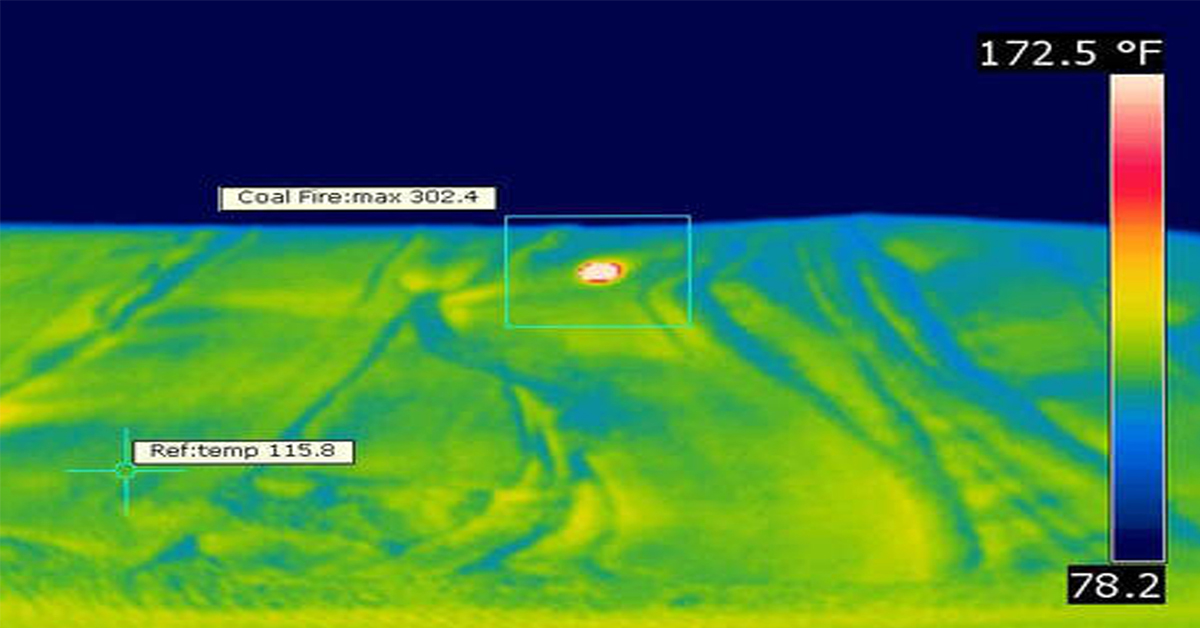
Application Spotlight: Early Fire Detection for Rapid Heat Generation

Protect Personnel and Equipment by Detecting Early Signs of Fire
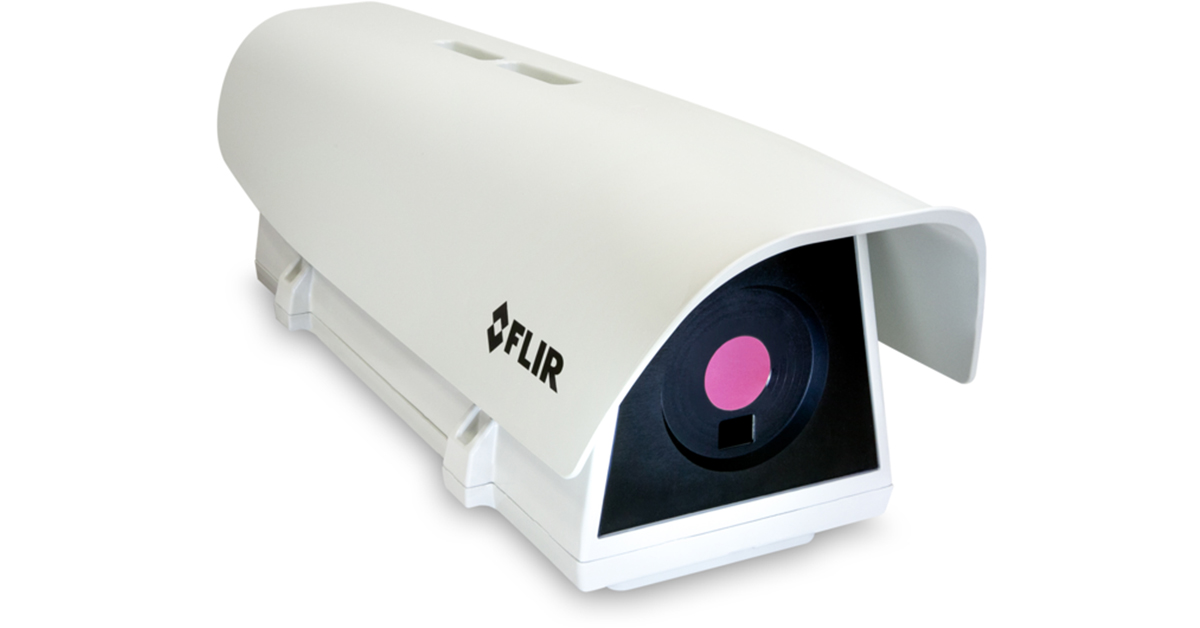
Teledyne FLIR Launches A500f/A700f Cameras for Fire Detection and Condition Monitoring
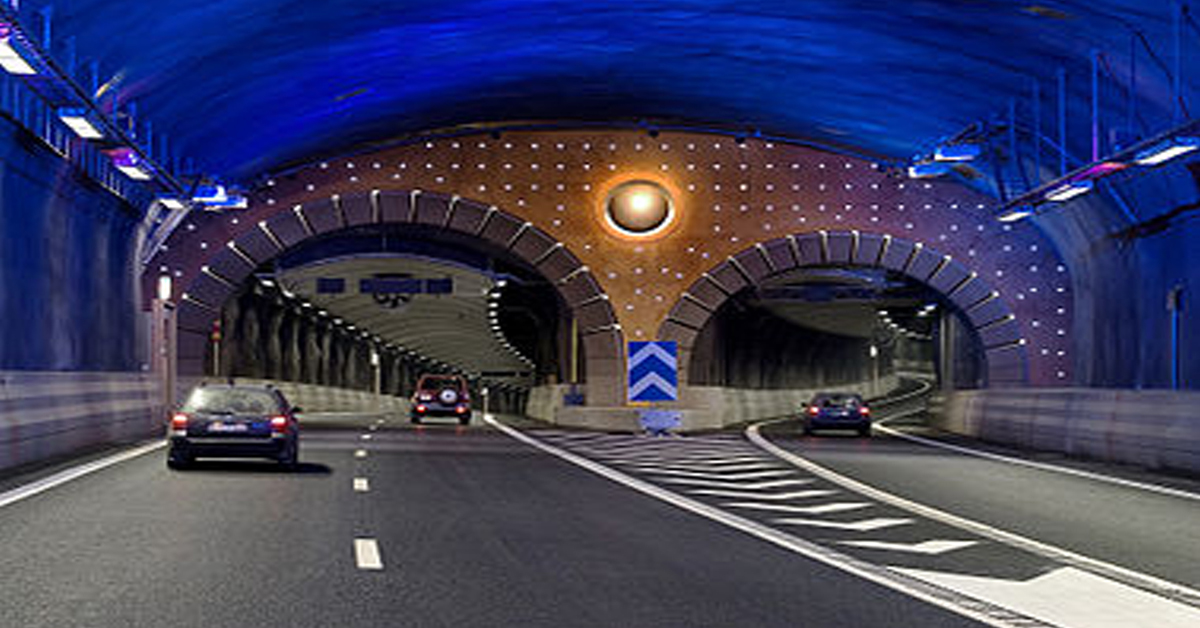
Thermal Imaging Cameras Help Guarantee Fire Safety in Tunnels
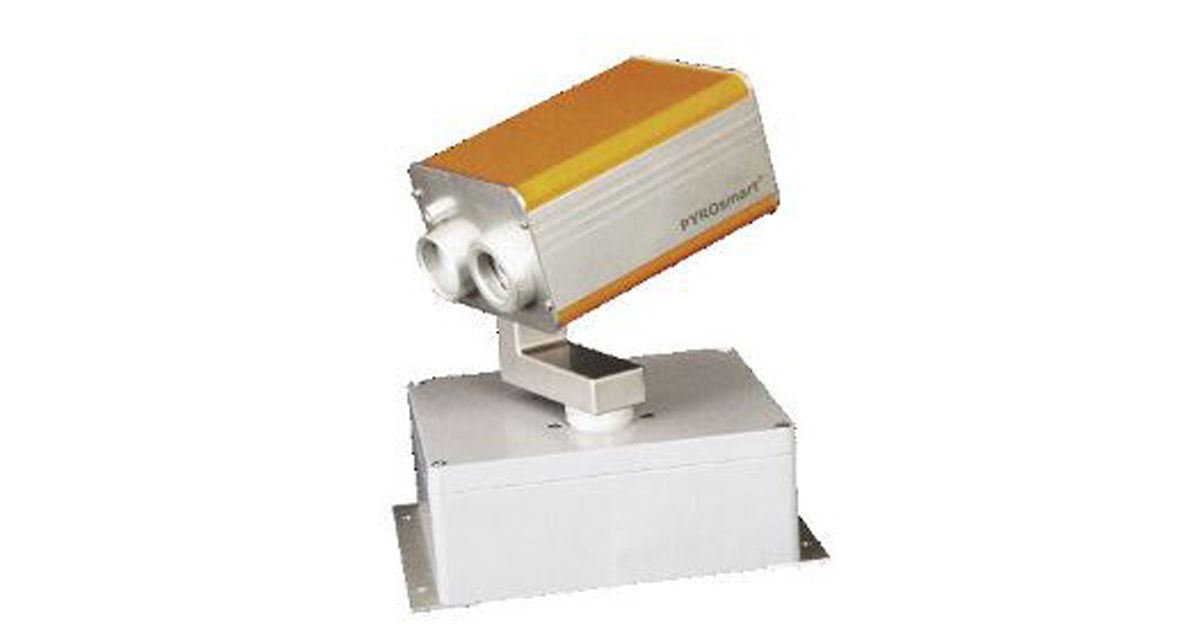
Thermal Imaging Cameras Help to Prevent Fires

ITS-Series Dual AID Surpasses Standards for Fire Detection Systems in Japan
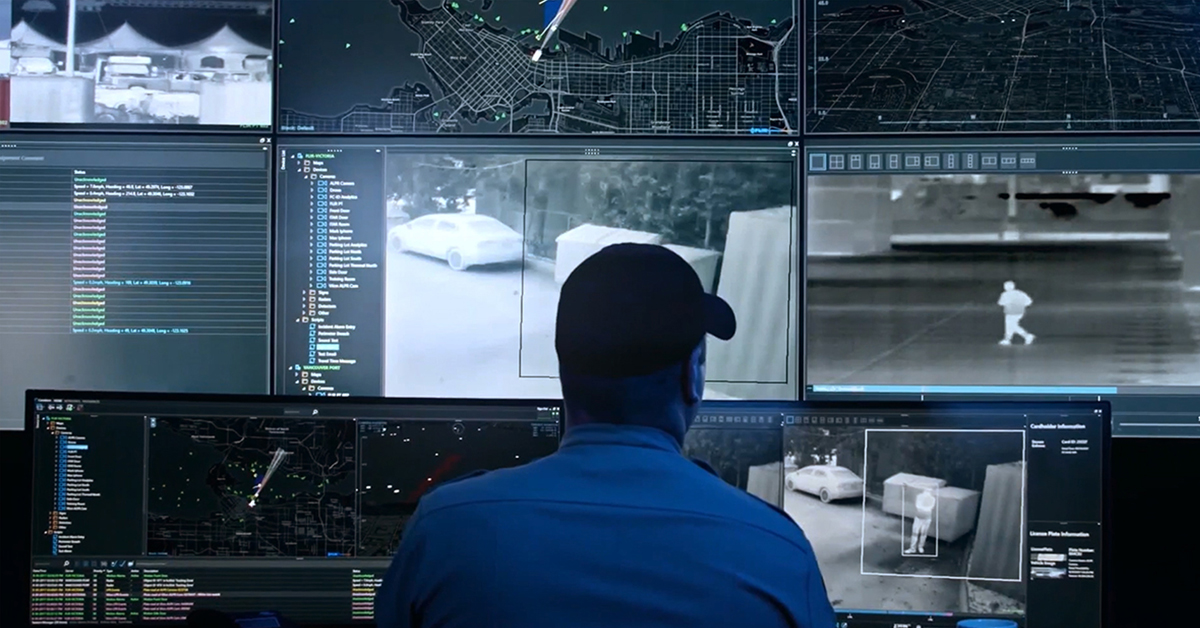
How Layering Multispectral PTZ Cameras and Radars Improve Perimeter Protection
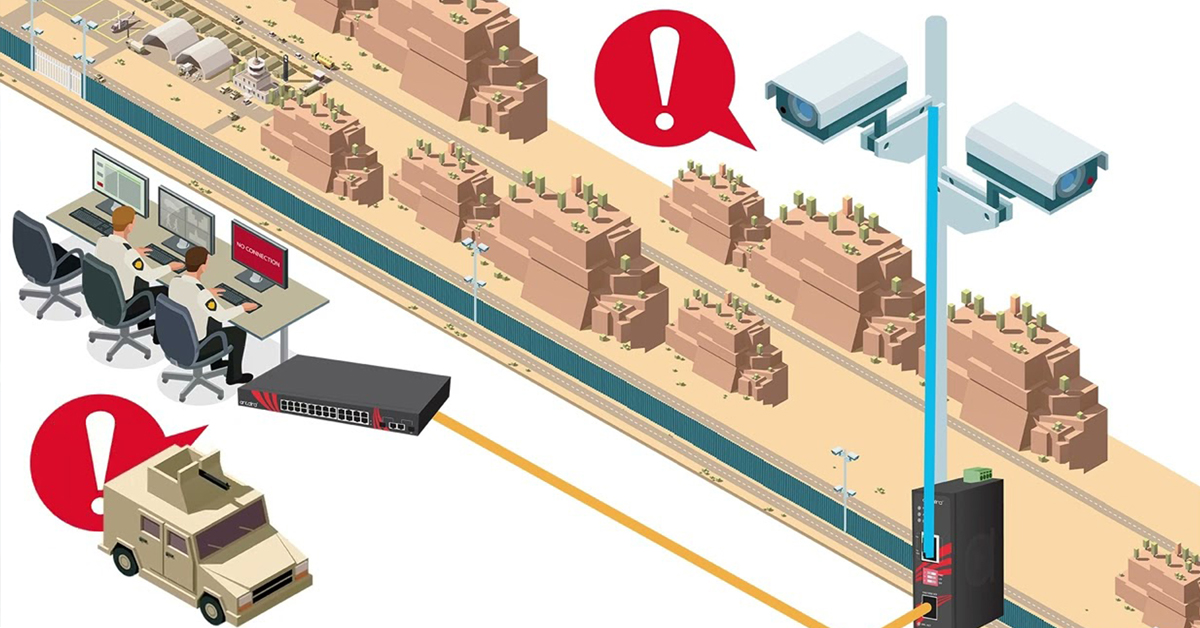
POWER REMOTE RESET TECHNOLOGY - PRRT

Why Yacht Owners are Adding Thermal Imaging Cameras to Minimise the Risk of Lithium-Ion Battery Fires?
.png)
Intelligent Transportation Systems

Best Practices Guide for Perimeter Security Applications

Protect Pedestrians, Bicyclists and More with Thermal Smart Sensors
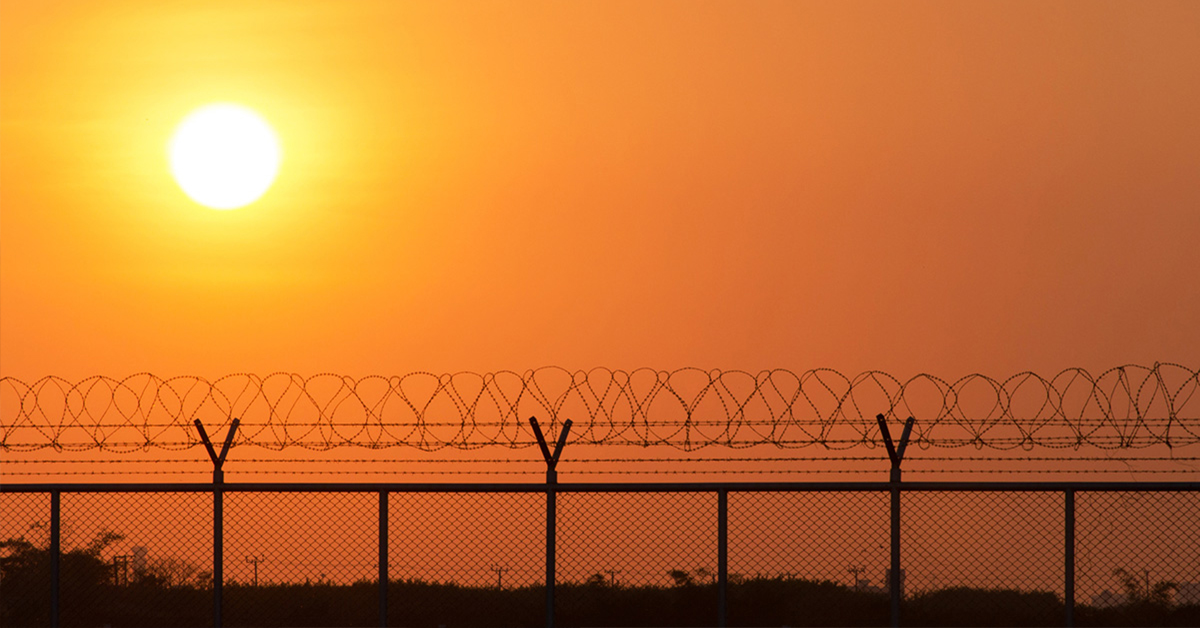
White Paper: Application of Ground-Based Security Radar to Perimeter Systems

What is Thermal Leakage and How to Reduce Its Risks
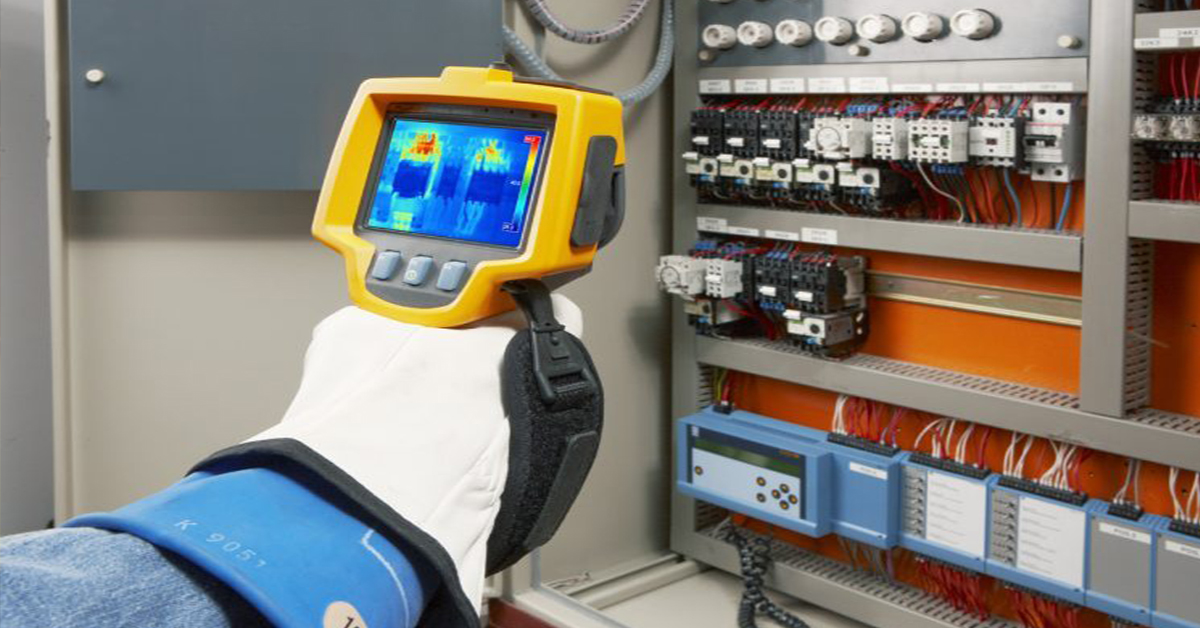
Battery Inspection Using Advanced Thermography

Providing ire Protection for Lithium Battery Storage
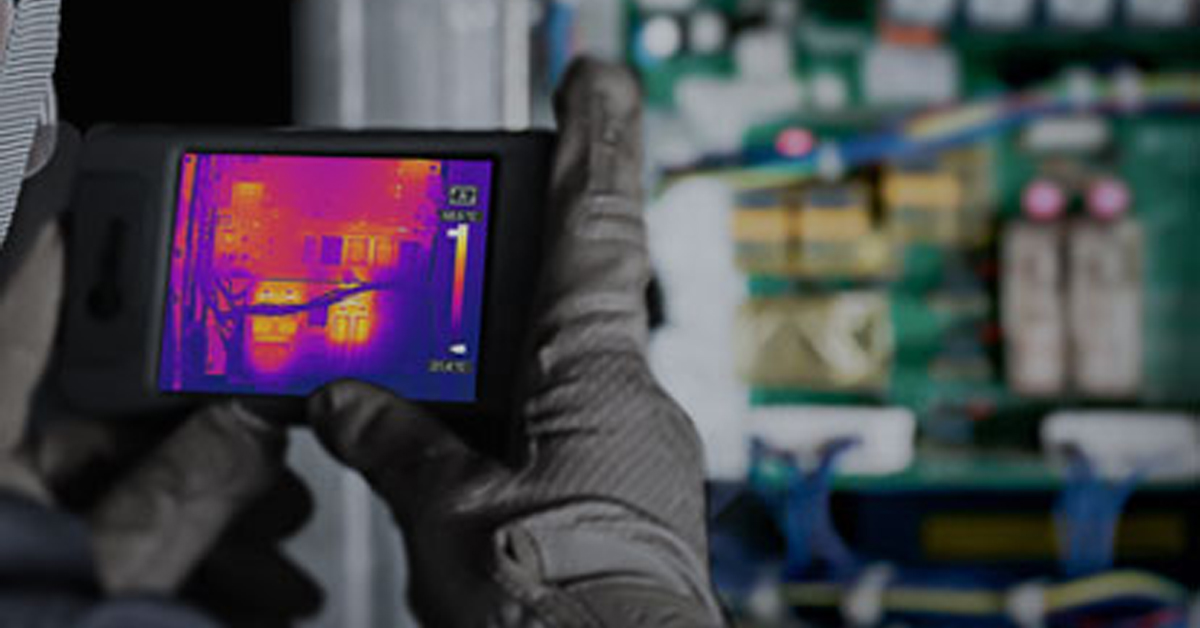
The Power of Thermal Imaging
.png)
Why Panel PCs Are Perfect For Industrial Applications?
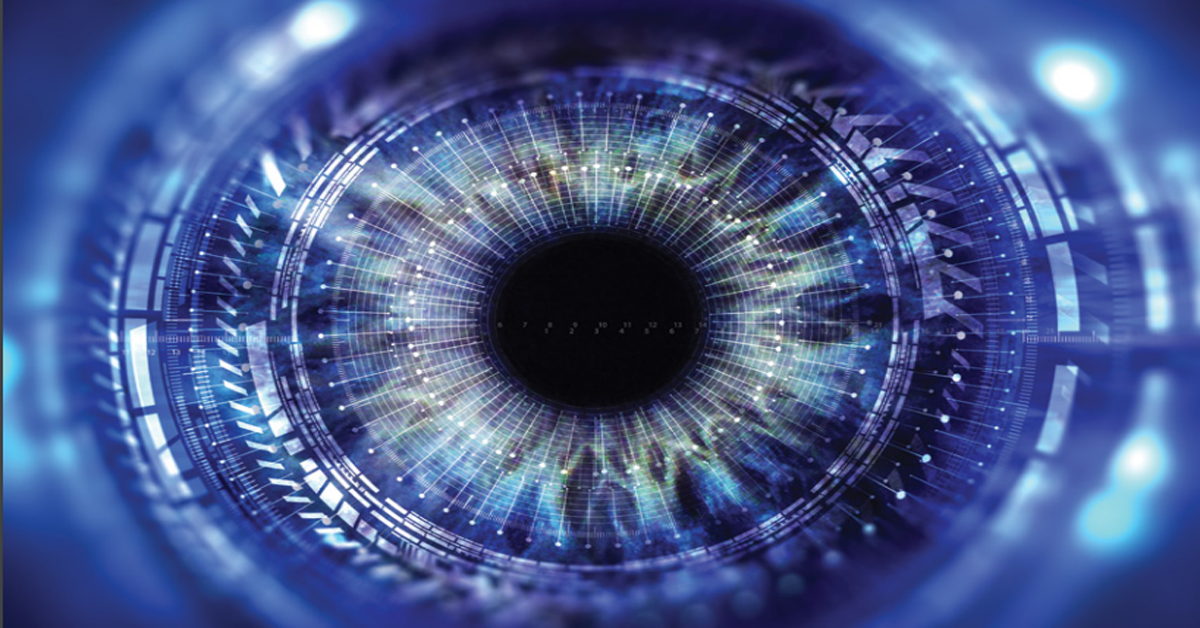
Teledyne DALSA
.png)
Advantages of Virtual Barrier Video Analytics for Perimeter Security Systems
.png)
.png)
NASA Takes the Teledyne FLIR Boson Thermal Camera Module Out of this World
.png)
Port Security Enhancement: DP World Yarımca's Trust in FLIR Security Solutions for Effective and Safe Port Operations
.png)
The Importance of Thermal Sensitivity (NETD) for Detection Accuracy
.png)
Bosphorus Boat Show 2025: The Meeting Point of the Maritime World

Application Spotlight: Critical Asset Monitoring for Thermal Conditions
.png)
Thermal Imaging for Marine Firefighting
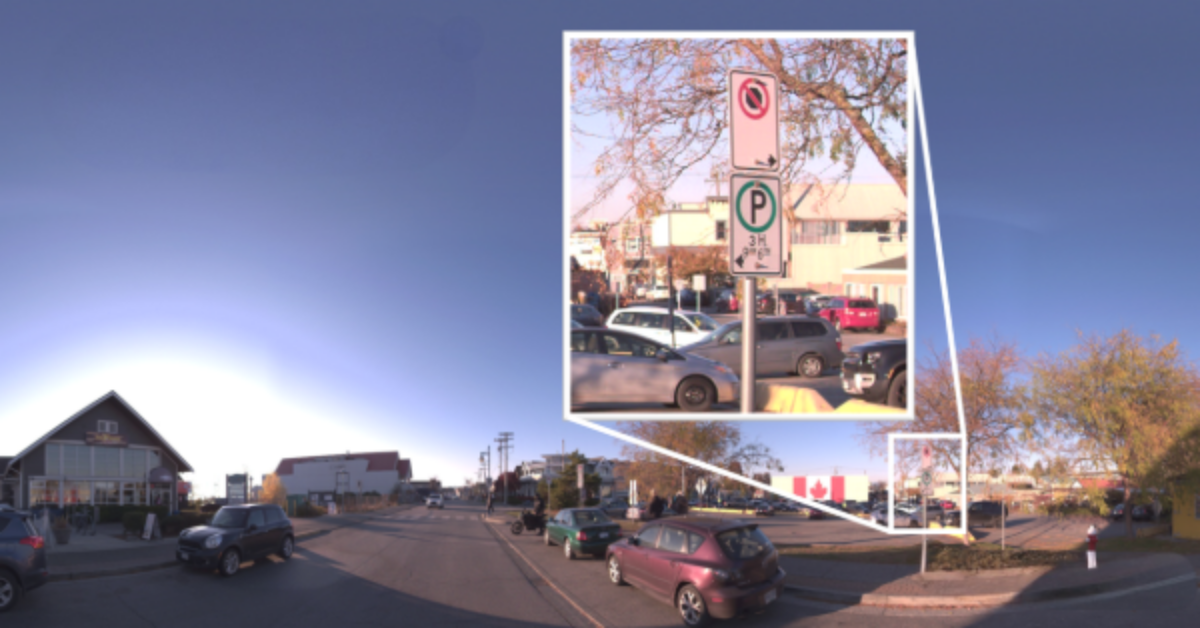
Imaging in Mobile Mapping
.png)
Using Thermal Imaging for Oil Spill Detection

Five Reasons Maritime First Responders Need Thermal Imaging
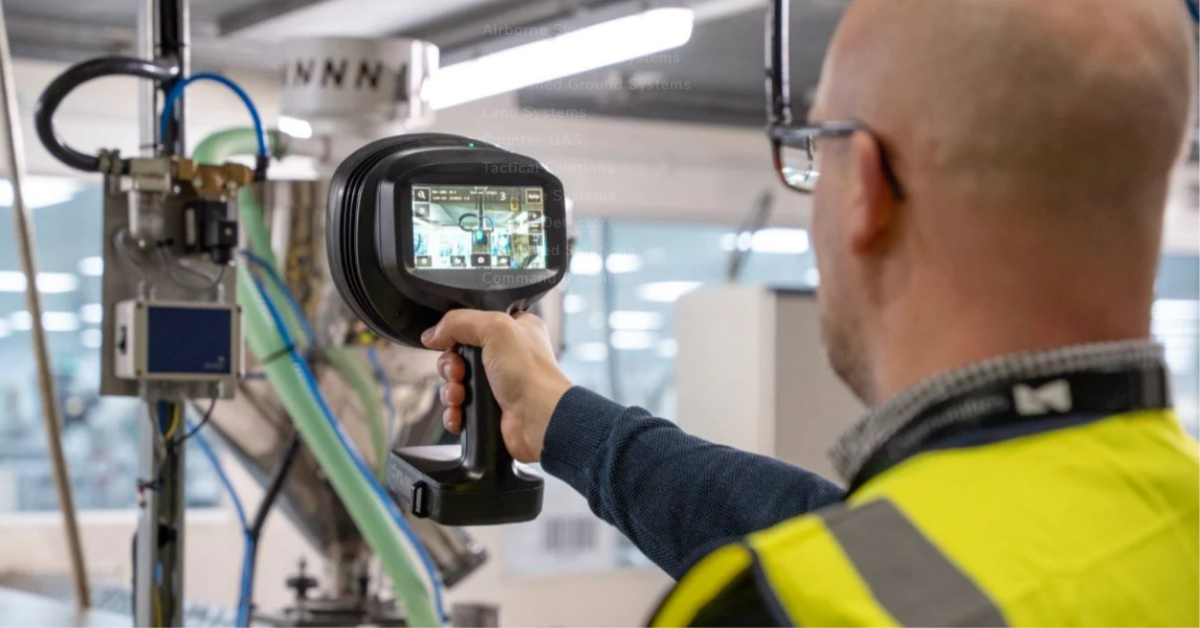
Case Study: Tackling Compressed Air Leaks in Automotive Parts Manufacturing with Acoustic Imaging

Thermal Night Vision as a Force Multiplier
.png)
Line Scan Contact Image Sensor - AxCIS
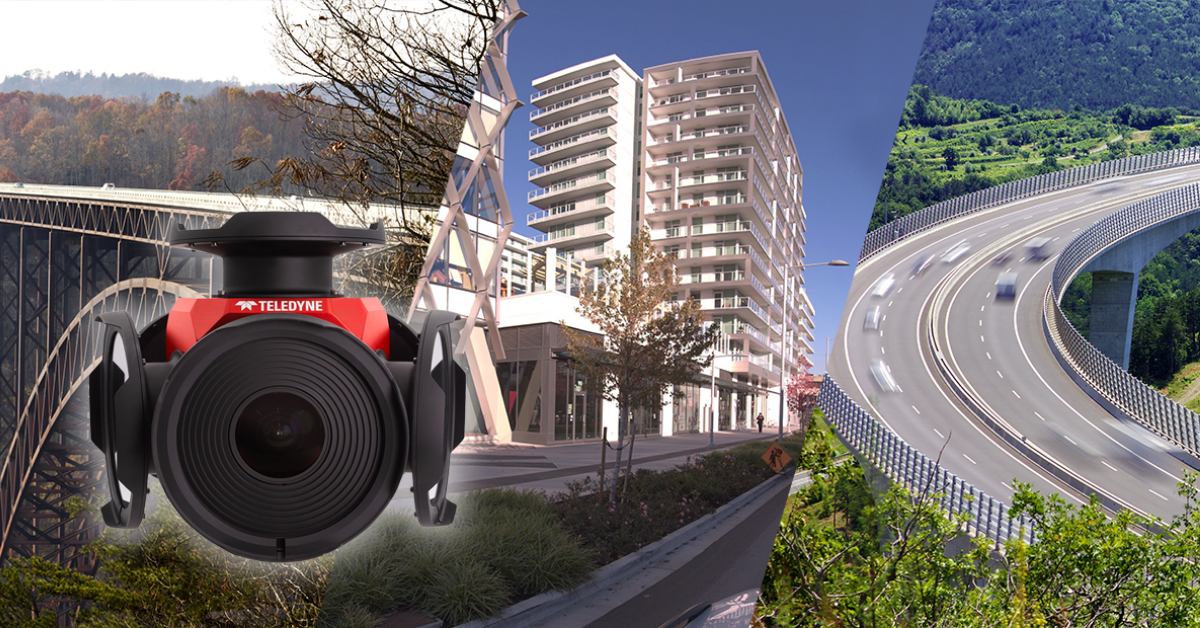
Beyond Resolution: What Really Makes a Camera System Work for Mobile Mapping
.png)
Multispectral Marine Cameras for USV Applications
.png)
Stabilizing FLIR Cameras for Smooth Viewing in Rough Waters
 (1).png)






